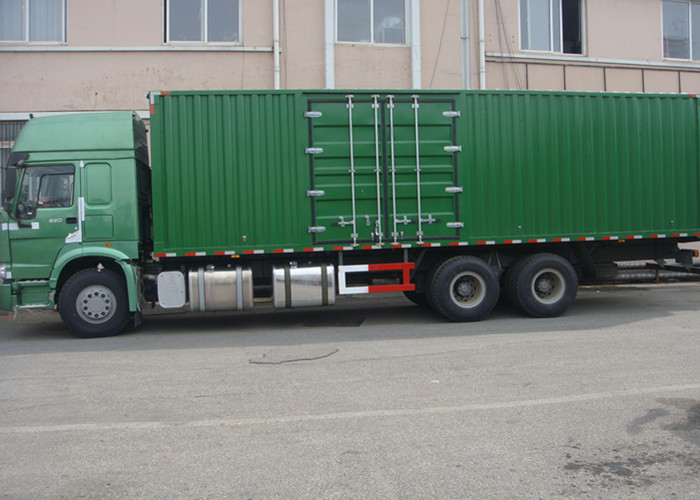Sulfuric acid is one of the most widely used chemicals in various industries. Its corrosive nature requires that it is stored and transported in suitable containers designed to ensure safety and prevent leaks. In this article, we will explore the various types of sulfuric acid containers, their materials, safety measures, storage requirements, and practical tips for handling these hazardous materials.
What is Sulfuric Acid?
Sulfuric acid (H₂SO₄) is a highly corrosive strong mineral acid. It is colorless, odorless, and oily in consistency. Commonly used in batteries, fertilizers, and various industrial processes, sulfuric acid is known for its dehydrating properties and its ability to react with metals and organic substances.
The Importance of Proper Containers for Sulfuric Acid
The safe storage and transportation of sulfuric acid are critical due to its reactive and corrosive nature. Using the correct container ensures:
Safety
Proper containers prevent leaks and spills, minimizing hazards to human health and the environment.
Compliance
Adhering to local and international regulations regarding the transport and storage of hazardous materials.
Efficiency
Choosing the right container can help maintain the integrity of sulfuric acid, ensuring it functions effectively in its applications.
Types of Containers for Sulfuric Acid
1. Plastic Containers
Plastic containers are commonly used for sulfuric acid. They are lightweight, resistant to corrosion, and relatively inexpensive.
- High-Density Polyethylene (HDPE): Preferred for storing sulfuric acid due to its excellent chemical resistance.
- Polypropylene (PP): Another suitable option, particularly for smaller quantities.
2. Glass Containers
Glass containers are suitable for small volumes of sulfuric acid. They are resistant to corrosion and do not react with the acid.
- Borosilicate Glass: Ideal for laboratory applications due to its high resistance to thermal shock.
3. Metal Containers
While not as common as plastic or glass, metal containers are used in specific applications.
- Stainless Steel: Can be used for transport but requires proper coatings to resist corrosion.
- Steel Drums: Often lined with protective coatings to prevent reaction with sulfuric acid.
4. Intermediate Bulk Containers (IBCs)
IBCs are reusable containers utilized for the storage and transport of bulk liquids. They are ideal for large quantities of sulfuric acid.
Advantages of IBCs
- Space-efficient for transport and storage.
- Easy to fill, empty, and stack.
Material Considerations for Sulfuric Acid Containers
Corrosion Resistance
The container material must be resistant to corrosion to withstand sulfuric acid, which can degrade many metals and some plastics over time.
Temperature Tolerance
Containers should be able to sustain the temperatures at which sulfuric acid is typically stored and handled, especially in varying climates.
Durability and Strength
Containers must be strong enough to withstand physical handling and transportation forces to prevent breakage or leakage.
Storage Requirements for Sulfuric Acid Containers
1. Location
Store sulfuric acid containers in a cool, dry, and well-ventilated area, away from direct sunlight and heat sources.
2. Ventilation
Ensure proper ventilation to disperse any fumes that could escape from a leaking container, reducing the risk of inhalation exposure.
3. Secondary Containment
Use secondary containment measures such as spill trays or bunds to capture any leaks or spills from containers.
4. Labeling
All containers should be clearly labeled with the contents, hazard warnings, and appropriate handling instructions.
Safety Measures When Handling Sulfuric Acid
Protective Gear
Wear appropriate personal protective equipment (PPE), including gloves, goggles, and acid-resistant clothing, to minimize exposure risks.
Training
Ensure that all personnel handling sulfuric acid are trained on safe handling, usage, and emergency procedures.
Emergency Preparedness
Have an emergency response plan in place, including spill kits and eye wash stations, readily accessible in the storage area.
Transporting Sulfuric Acid
Regulatory Compliance
Follow all relevant local, national, and international regulations when transporting sulfuric acid. This includes obtaining necessary permits and adhering to transport safety guidelines.
Proper Packaging
Utilize containers designed for hazardous materials for the transport of sulfuric acid. These containers should be sturdy, well-sealed, and clearly labeled.
Common Applications of Sulfuric Acid
1. Fertilizer Production
Sulfuric acid plays a crucial role in producing phosphate fertilizers.
2. Battery Manufacturing
It is a key component in lead-acid batteries, crucial for power storage in vehicles and backup systems.
3. Chemical Manufacturing
Sulfuric acid serves as a feedstock in the production of various chemicals, including hydrochloric acid and nitric acid.
4. Wastewater Treatment
Used to adjust pH levels and aid in the removal of heavy metals from industrial effluents.
Practical Examples and Tips for Handling Containers
Example 1: Laboratory Storage
In a lab setting, utilize Borosilicate glass containers with airtight seals for storing small quantities of sulfuric acid. Ensure they are placed on chemical-resistant shelves, away from heat sources.
Example 2: Industrial Storage
Use HDPE IBCs for bulk storage and transport. Ensure secondary containment measures are in place, especially if stored outdoors.
Tip 1
Always conduct regular checks for signs of corrosion or leaks in sulfuric acid containers. Replace any damaged containers immediately.
Tip 2
Consider installing a dedicated safety shower and eyewash station near your sulfuric acid storage area for immediate access in case of exposure.
FAQ Section
1. What should I do in case of a sulfuric acid spill?
Immediately evacuate the area, wear appropriate PPE, and use a spill kit to contain and neutralize the acid. Report the spill to the appropriate authorities.
2. How often should I inspect sulfuric acid containers?
Regular inspections should be conducted at least monthly, with more frequent checks for containers subject to heavy use or exposure to harsh conditions.
3. Can sulfuric acid corrode all metals?
No, not all metals are equally affected by sulfuric acid. Stainless steel can be used with proper protective barriers, but metals like iron and mild steel are likely to corrode rapidly.
4. What is the best material for a sulfuric acid container?
High-density polyethylene (HDPE) is often recommended for its excellent chemical and corrosion resistance, making it ideal for storing sulfuric acid.
5. Is it safe to store sulfuric acid in glass containers?
Yes, glass containers, particularly borosilicate glass, are safe for small volumes of sulfuric acid and are resistant to corrosion.
6. How long can sulfuric acid be stored in a container?
Sulfuric acid can be stored for long periods if kept in appropriate containers and stored under the right conditions. Regular checks should be conducted to ensure container integrity.






